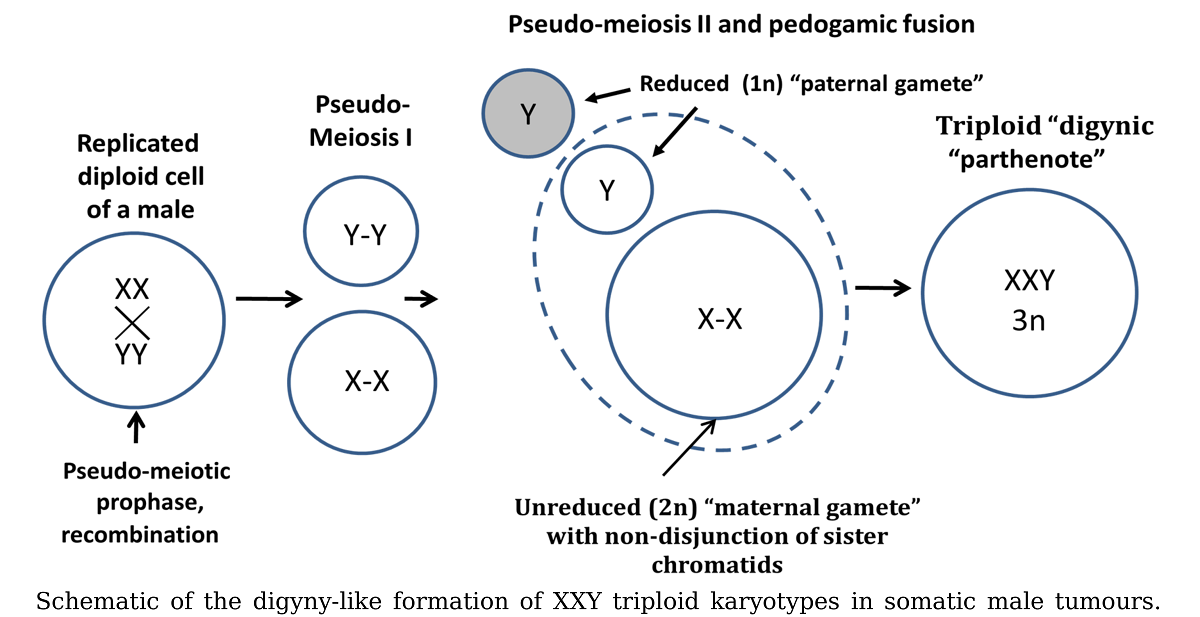Triploidy in cancer is associated with poor prognosis but its origins remain unclear. Here, we attempted to differentiate between random chromosomal and whole-genome origins of cancer triploidy. In silico meta-analysis was performed on 15 male malignant and 5 benign tumour cohorts (2928 karyotypes) extracted from the Mitelman Database, comparing their ploidy and combinations of sex chromosomes. A distinct near-triploid fraction was observed in all malignant tumour types, being especially high in seminoma. For all tumour types, X-chromosome doubling, predominantly observed as XXY, correlated strongly with the near-triploid state (r≈0.9, p<0.001), negatively correlated with near-diploidy, and did not correlate with near-tetraploidy. A smaller near-triploid component with a doubled X-chromosome was also present in 3 of 5 benign tumour types, especially notable in colon adenoma. Principal Component Analysis revealed a non-random correlation structure shaping the X-chromosome disomy distribution across all tumour types. We suggest that doubling of the maternal genome followed by pedogamic fusion with a paternal genome (a possible mimic of the fertilization aberration, 69, XXY digyny) associated with meiotic reprogramming may be responsible for the observed rearrangements of genome complements leading to cancer triploidy. The relatively frequent loss of the Y-chromosome results secondary from chromosome instability.

